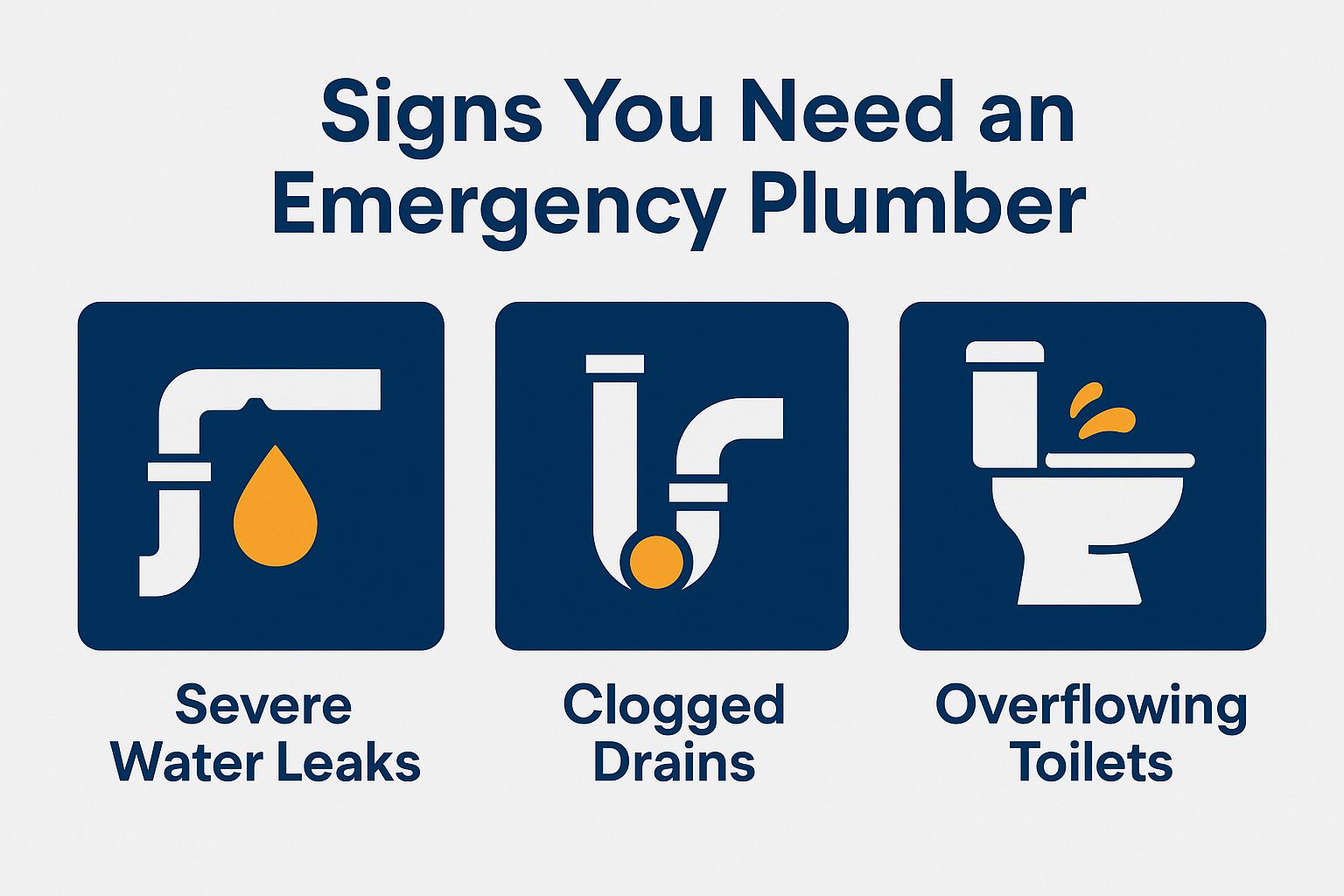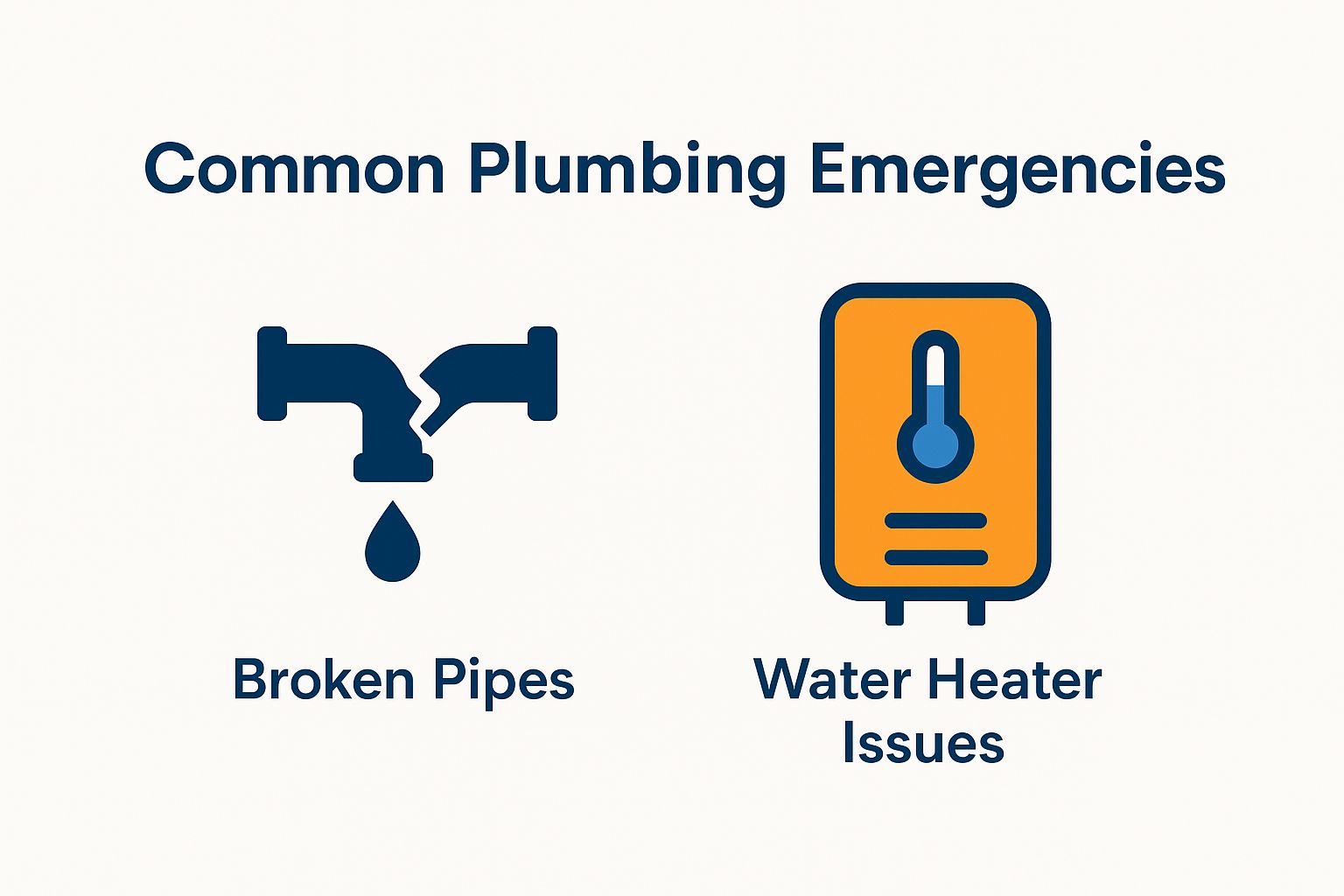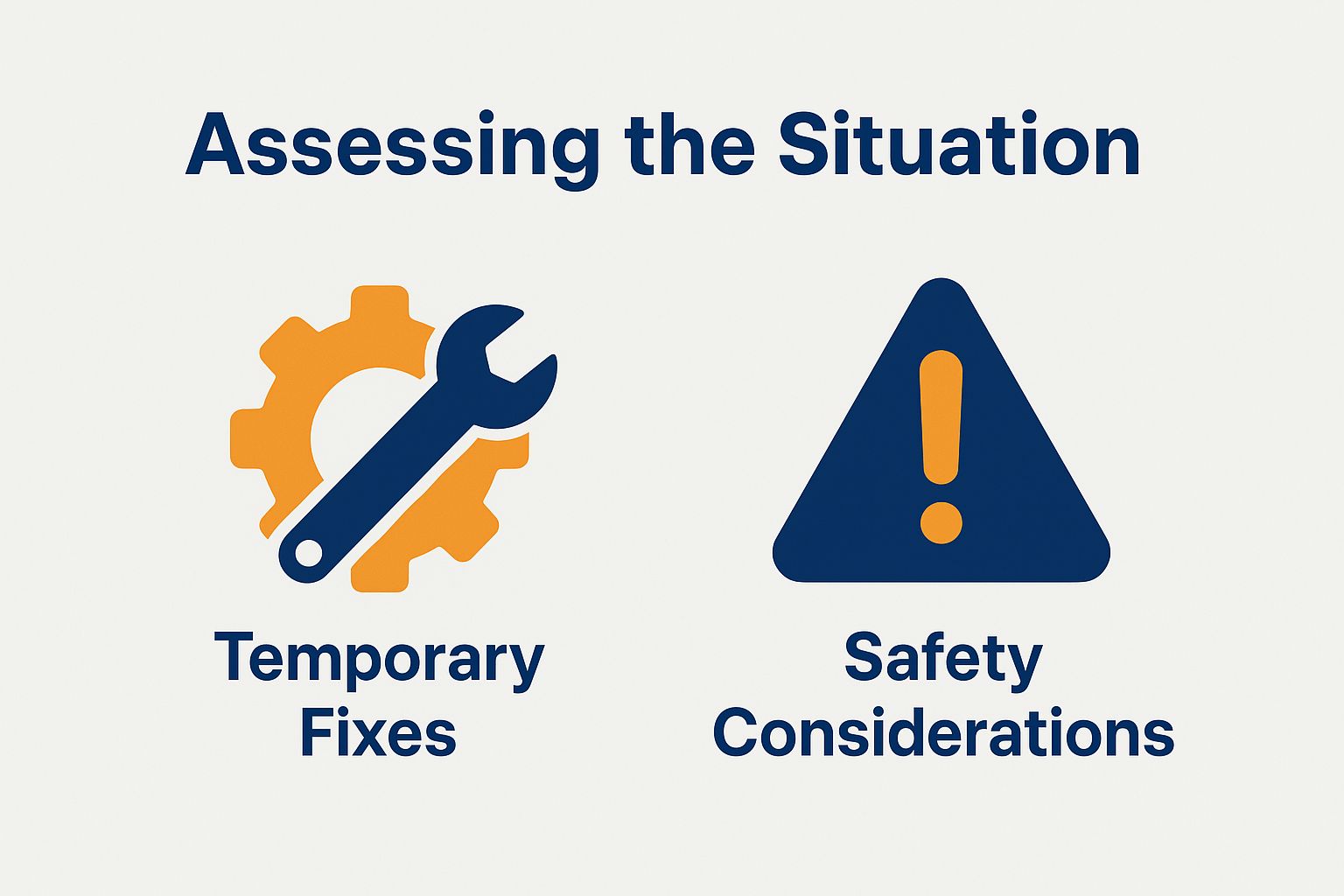
Knowing when to call a plumber during a plumbing emergency can save you money and stress. Severe water leaks, burst pipes, and low water pressure are key signs of trouble. Understanding the signs is crucial. Experts like John Kortes at NuBlue emphasize the importance of timely intervention. In this article, we’ll guide you through the telltale signs of a plumbing crisis and help you determine when it’s time to reach out for professional assistance.
Signs You Need an Emergency Plumber
Recognizing plumbing emergencies is vital to prevent water damage and costly repairs.

Severe Water Leaks
Severe water leaks can cause major structural damage and mold growth. Costs can rise to thousands if ignored.
Check walls and ceilings for water stains or discoloration to spot leaks. Additionally, one should check for damp spots, peeling paint, or signs of mold growth.
If there is pooling water, particularly around appliances or from frozen pipes, immediate action is essential.
Keep a reliable plumber’s contact information handy for emergencies. This ensures quick access to help.
Find a plumber before a crisis. Use platforms like Yelp or Angie’s List for recommendations, which can facilitate a more efficient repair process.
Clogged Drains
A clogged drain has the potential to escalate into a plumbing emergency, particularly if it results in sewage backups or overflow problems.
To address early indications of clogs, it is advisable to monitor for slow drainage and any unpleasant odors.
- Initially, one can use a plunger to dislodge minor blockages;
- for more stubborn clogs, a drain snake may be employed to reach deeper into the pipes.
Additionally, a mixture of baking soda and vinegar can help break down grease buildup. However, if these methods prove ineffective or if recurrent issues arise, it is essential to engage the services of a professional plumber.
Ignoring the problem leads to major damage and costly repairs. Act quickly!
Overflowing Toilets
An overflowing toilet is a serious issue. It can cause major water damage and health risks if not addressed promptly.
To minimize potential damage, the first action is to shut off the water supply immediately to minimize damage. This can be accomplished by locating the valve, which is typically situated behind the toilet near the wall, and turning it clockwise.
Subsequently, remove the lid of the toilet tank and press down on the flapper to halt the flow of water. If the issue persists, employ towels or a wet/dry vacuum to remove excess water, thereby preventing it from infiltrating floors or walls and causing further water damage.
Contact an emergency plumber to diagnose and fix the problem. This helps prevent future issues.
Common Plumbing Emergencies
Certain plumbing emergencies necessitate prompt professional intervention to mitigate the risk of significant property damage and to avoid incurring costly repairs.

Broken Pipes
A burst pipe can release substantial volumes of water in a matter of minutes, resulting in significant water damage and potential mold growth.
To address this situation promptly, it is advisable to turn off the main water supply to prevent further flooding. This main valve is typically located near the water meter. Subsequently, draining the taps will help eliminate excess water from the pipes.
It is also important to document the damage with photographs for insurance purposes and to contact a licensed plumber as soon as possible.
Repair costs range from $150 to $1,000, depending on the burst pipe’s severity and accessibility. Taking swift action can substantially reduce long-term costs and the extent of necessary repairs.
Water Heater Issues
Water heater failures can significantly disrupt daily routines, resulting in cold showers and potential leaks that may require emergency plumbing services.
Common signs of water heater problems include:
- Water leakage
- Inconsistent water temperatures
- Unusual noises such as popping or banging
Should you observe a leak or have cold water even after adjusting the thermostat, contact a plumber right away.
Plumbing repair costs range from $150 to $400, depending on the issue’s severity and local rates. Timely attention to these signs can help prevent more extensive damage and avoid costly replacements in the future.
Assessing the Situation
Quickly assessing the plumbing situation is key to reducing damage and deciding if you can handle it or need a professional.

Temporary Fixes
Knowing temporary fixes can buy you time until a plumber arrives and prevent further damage.
For minor leaks, applying duct tape can serve as an effective short-term remedy-simply wrap it securely around the leak to reduce the flow of water. If there is a pipe burst, positioning a bucket underneath the affected area will help collect the water.
Before acting, find the main water valve. It’s usually in the basement or outside your property, to control the main water supply. To shut off the water supply, turn the valve clockwise until it is fully tightened. This action will halt the water flow and assist in preventing flooding until a plumber can address the issue.
Safety Considerations
Safety is the top priority during plumbing emergencies, especially with potential hazards like gas leaks or electrical issues. If you suspect a gas leak, immediately turn off the gas supply.
- If a gas leak is suspected, it is imperative to immediately turn off the gas supply at the main valve and evacuate all individuals from the premises. Avoid using electronic devices or light switches, as these actions could ignite any escaping gas.
- If water has compromised electrical outlets, it is critical to refrain from touching appliances or outlets with wet hands. If it is safe to do so, turn off the power from the main breaker.
- After implementing these safety measures, promptly contact a licensed plumber to address the issue effectively.
Finding an Emergency Plumber
Finding a reliable emergency plumber can reduce stress and ensure timely service during plumbing emergencies.
What to Look For
When choosing an emergency plumber, look for key signs like licensing, certifications, and customer reviews to inform your decision-making process. You might find resources in areas like Charlotte, Fayetteville, Greenville, or Lake Norman.
Start by checking that the plumber has a valid license, which shows they comply with local regulations. For example, plumbers associated with NuBlue and John Kortes are recognized for their expertise. Additionally, seek out any relevant certifications that demonstrate specialized training in areas such as gas line repairs.
Customer reviews provide insights into a plumber’s reliability and service quality. Check platforms like Yelp and Angie’s List for recent evaluations.
Furthermore, inquire about the plumber’s insurance coverage; a reputable professional should carry liability insurance to safeguard you against potential damages that may occur during the job.
Questions to Ask
Ask the right questions to ensure you choose a qualified emergency plumber who meets your needs.
Ask about their experience with issues like burst pipes or clogged drains. Understanding their response time is also crucial; a reliable plumber should be able to guarantee a prompt arrival, typically within one hour. Additionally, it is advisable to ask about warranties on their services, which can provide protection against future complications.
There are several red flags to be aware of when evaluating potential plumbers, including:
- Vague pricing
- Reluctance to provide references
- Lack of appropriate licenses and insurance
A reputable plumber shows transparency and confidence in their qualifications. This builds trust with clients and ensures quality service.


